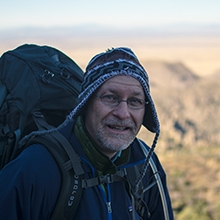Dear Colleagues,
I’m pleased to invite you to a webinar hosted by Wildlife Acoustics titled:
New Frontiers in Soundscape Ecology:
Authors of Acoustic Indices Discuss What Sound Can Reveal
Thursday, October 22, 2020
Time: 19:00-21:00 UTC
12:00-2:00 PM Pacific US time
3:00-5:00PM Eastern US time
8:00-10:00PM BST UK time
9:00-11:00PM Western European time
6:00-8:00AM East Australia time (on 23 October)
Our expert panel will include Dr Bryan Pijanowski and Dr Michael Towsey. Other researchers may be added.
Click Here to Register
Dr Bryan Pijanowski

As a professor at Purdue University and Director of Purdue’s Center for Global Soundscapes, Dr. Pijanowski conducts work on the use of sound and soundscapes to understand the dynamics of socio-ecological systems. Marquee projects in the center include Vanishing
Soundscapes (a project in every major biome of the world), a citizen science Record the Earth project, an IMAX film (Global Soundscapes: A Mission to Record the Earth) he served as Executive Producer, the
iListen.org learning platform for youth, an NSF-funded Global Sustainable Soundscapes Network workshop series, and Youth Ecosystem Listening Labs, a summer camp program for youth. His lab has produced the SoundEcologyR
tool and Computational Applications for Soundscape Ecology, an inhouse tool that simulate sound propagation in terrestrial environments. He has published widely in soundscape ecology and landscape change, including papers in BioScience, Landscape Ecology and
the Proceedings of the National Academy of Sciences.
Dr. Michael Towsey

Michael is a senior research fellow at Charles Sturt University and Queensland University of Technology, in Australia. He has worked on a wide variety of Machine Learning research projects, ranging from the sublime (computer composition of music - actually,
it did not sound very good!) to the ridiculous (the analysis of milk yield in cow herds). In between, he has worked on natural language processing and the bioinformatic analysis of bacterial genomes. For the last twelve years he has worked on the analysis
of long-duration recordings of the natural environment. Automating the analysis of natural soundscapes is difficult because almost any sound can turn up and the recordings are usual long. One cannot listen to even a small fraction of it. Michael has developed
techniques to visualise long recordings so that ecologists can “see” the sounds they have recorded, thereby keeping them in the analysis-loop. Michael has published more than 120 peer reviewed papers with over 1700 citations.
Thank you,
--Mona
Mona Doss
Wildlife Acoustics, Inc.
http://www.wildlifeacoustics.com